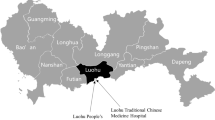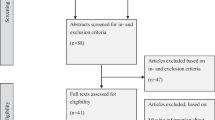Abstract
Many studies have analyzed the effects of clinical pathways, but most have considered only single diseases. The purpose of the present study was to exploratively analyze electronic medical records related to the use of clinical pathways, seeking trends that could usefully benefit clinical activity. From the data warehouse of University of Miyazaki Hospital, collected from April 2014 to March 2016, we retrospectively identified 6523 patients for whom a clinical pathway was applied. Other inclusion criteria were single hospitalization, the type of medical fee was comprehensive, and data were available so that all clinical indicators could be calculated. Two types of deviation from the clinical pathway were defined: cancellation (described in the clinical pathway but not implemented) and addition (not described in the clinical pathway but nevertheless implemented). If the code of International Classification of Diseases describing the clinical pathway differed from that describing where the medical resource was mostly spent, we considered this as indicating a complication. We compared principal clinical indicators (length of hospital stay, mortality rate, and comprehensive-volume ratio) by completion rate for the clinical pathway. Regardless of whether patients had complications, completing the clinical pathway was associated with a significant reduction in length of hospital stay. This finding indicated that length of hospital stay could be shortened if all medical treatments described in the clinical pathway were implemented. Our results demonstrated that it is possible to shorten the length of hospital stay by improving clinical pathways to include medical treatment for preventing complications.




Similar content being viewed by others
References
Lawal, A.K., Rotter, T., Kinsman, L., et al., What is a clinical pathway? Refinement of an operational definition to identify clinical pathway studies for a Cochrane systematic review. BMC Med. 14:35, 2016. https://doi.org/10.1186/s12916-016-0580-z.
Burgers, P.T.P.W., Van Lieshout, E.M., Verhelst, J., et al., Implementing a clinical pathway for hip fractures; effects on hospital length of stay and complication rates in five hundred and twenty six patients. Int. Orthop. 38:1045–1050, 2014. https://doi.org/10.1007/s00264-013-2218-5.
Dautremont, J.F., Rudmik, L.R., Yeung, J., et al., Cost-effectiveness analysis of a postoperative clinical care pathway in head and neck surgery with microvascular reconstruction. Otolaryngol. Head Neck Surg. 42:59, 2013. https://doi.org/10.1186/1916-0216-42-59.
Lin, D.X., Li, X., Ye, Q.W., et al., Implementation of a fast-track clinical pathway decreases postoperative length of stay and hospital charges for liver resection. Cell Biochem. Biophys. 61:413–419, 2011. https://doi.org/10.1007/s12013-011-9203-7.
Jiang, K., Cheng, L., Wang, J.J., Li, J.S., and Nie, J., Fast track clinical pathway implications in esophagogastrectomy. World J. Gastroenterol. 15:496–501, 2009. https://doi.org/10.3748/wjg.15.496.
Ban, A., Ismail, A., Harun, R., et al., Impact of clinical pathway on clinical outcomes in the management of COPD exacerbation. BMC Pulm. Med. 12:27, 2012. https://doi.org/10.1186/1471-2466-12-27.
Taylor, W.J., Wong, A., Siegert, R.J., and McNaughton, H.K., Effectiveness of a clinical pathway for acute stroke care in a district general hospital: an audit. BMC Health Serv. Res. 6:16, 2006. https://doi.org/10.1186/1472-6963-6-16.
Nielsen, A.S., and Nielsen, B., Implementation of a clinical pathway may improve alcohol treatment outcome. Addict Sci. Clin. Pract. 10:7, 2015. https://doi.org/10.1186/s13722-015-0031-8.
Munitiz, V., Martinez-de-Haro, L.F., Ortiz, A., et al., Effectiveness of a written clinical pathway for enhanced recovery after transthoracic (Ivor Lewis) oesophagectomy. Br. J. Surg. 97:714–718, 2010. https://doi.org/10.1002/bjs.6942.
Haugan, A., Johnsen, L.G., Basso, T., and Foss, O.A., Mortality and readmission following hip fracture surgery: a retrospective study comparing conventional and fast-track care. BMJ Open. 7:e015574, 2017. https://doi.org/10.1136/bmjopen-2016-015574.
Sakai, M., Ishikawa, S., Sano, E., et al., Implementation of a comprehensive medical fee system simultaneously using a diagnosis procedure combination and a critical pathway for pulmonary resection. J JHM. 5:339–344, 2004. 10.11191/jhm2000.5.339 in Japanese.
Velthoven, M.H., Mastellos, N., Majeed, A., O’Donoghue, J., and Car, J., Feasibility of extracting data from electronic medical records for research: an international comparative study. BMC Med. Inform. Decis. Mak. 16:90, 2016. https://doi.org/10.1186/s12911-016-0332-1.
Zhang, M., The application and practice of the electronic clinical pathway. J. Transl. Med. 10(Suppl 2):A57, 2012. https://doi.org/10.1186/1479-5876-10-S2-A57.
Wakamiya, S., and Yamauchi, K., What are the standard functions of electronic clinical pathways? Int. J. Med. Inform. 78:543–550, 2009. https://doi.org/10.1016/j.ijmedinf.2009.03.003.
Yasunaga, H., Matsui, H., Horiguchi, H., Fushimi, K., and Matsuda, S., Application of the diagnosis procedure combination (DPC) data to clinical studies. J. UOEH. 36:191–197, 2014. https://doi.org/10.7888/juoeh.36.191 in Japanese.
Wang, K., Li, P., Chen, L., et al., Impact of the Japanese diagnosis procedure combination-based payment system in Japan. J. Med. Syst. 34:95–100, 2010. https://doi.org/10.1007/s10916-008-9220-2.
Yasunaga, H., Ide, H., Imamura, T., and Ohe, K., Impact of the Japanese Diagnosis Procedure Combination-based Payment System on cardiovascular medicine-related costs. Int. Heart J. 46:855–866, 2005. https://doi.org/10.1536/ihj.46.855.
Lindof, G.S., and Berry, M.J.A., Data mining techniques: for marketing, sales, and customer relationship management, 3rd edn. Wiley, Indianapolis, 2011.
Hebert, C., Shivade, C., Foraker, R., et al., Diagnosis-specific readmission risk prediction using electronic health data: a retrospective cohort study. BMC Med. Inform. Decis. Mak. 14:65, 2014. https://doi.org/10.1186/1472-6947-14-65.
Rubin, D.J., Golden, S.H., McDonnell, M.E., and Zhao, H., Predicting readmission risk of patients with diabetes hospitalized for cardiovascular disease: a retrospective cohort study. J. Diabetes Complicat. 31:1332–1339, 2017. https://doi.org/10.1016/j.jdiacomp.2017.04.021.
Cai, X., Perez-Concha, O., Coiera, E., et al., Real-time prediction of mortality, readmission, and length of stay using electronic health record data. J. Am. Med. Inform. Assoc. 23:553–561, 2016. https://doi.org/10.1093/jamia/ocv110.
Hannan, E.L., Magaziner, J., Wang, J.J., et al., Mortality and locomotion 6 months after hospitalization for hip fracture risk factors and risk-adjusted hospital outcomes. JAMA. 285:2736–2742, 2001. https://doi.org/10.1001/jama.285.21.2736.
Acknowledgments
This study was supported by electronic medical record in University of Miyazaki Hospital. The authors would like to thank Enago (www.enago.jp) for the English language review.
Author information
Authors and Affiliations
Corresponding author
Ethics declarations
Conflict of Interest
The authors declare that they have no conflict of interest.
Ethical Approval
All procedures performed in studies involving human participants were in accordance with the ethical standards of the institutional research committee and with the 1964 Helsinki declaration and its later amendments or comparable ethical standards. For this type of study, formal consent is not required.
Informed Consent
This study was approved by the authors’ research ethics committee (Japan Advanced Institute of Science and Technology and Miyazaki University). Moreover, the authors were asked to obtain informed consent as follows: informed consent was obtained by opt-out method. Concretely, the authors noticed details of this study on their website and asked participants to offer the authors not to use their information until the specified date. After this date, the authors could use information without patients who asked us not to use.
Additional information
This article is part of the Topical Collection on Systems-Level Quality Improvement
Rights and permissions
About this article
Cite this article
Furuhata, H., Araki, K., Ogawa, T. et al. Effect on Completion of Clinical Pathway for Improving Clinical Indicator: Cases of Hospital Stay, Mortality Rate, and Comprehensive-Volume Ratio. J Med Syst 41, 206 (2017). https://doi.org/10.1007/s10916-017-0857-6
Received:
Accepted:
Published:
DOI: https://doi.org/10.1007/s10916-017-0857-6




